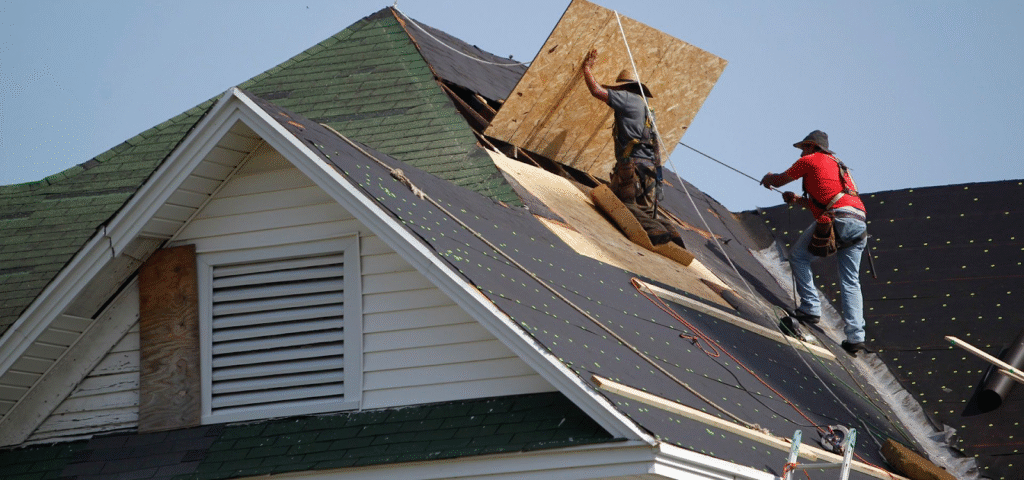A roof replacement is one of the most significant expenses a homeowner can face, and while it’s a necessary investment in protecting your home, the cost can be intimidating. Many homeowners are unprepared for the expense, mainly if damage occurs suddenly after a storm or years of gradual wear.
The good news is that there are ways to manage the cost without emptying your savings account. With careful planning and the right financing options, replacing your roof while maintaining financial stability is possible.
Understanding your choices ahead of time can ease stress and make the entire process more manageable, ensuring that your home stays safe and your finances remain secure.
Smart financing options for every homeowner
Home Equity Loans and Lines of Credit
One of the most common ways to fund a major home improvement project is by tapping into the equity you’ve built up in your property. Home equity loans and home equity lines of credit (HELOCs) allow you to borrow against the value of your home, often with lower interest rates than credit cards or personal loans.
A home equity loan provides a lump sum of money upfront, with fixed payments over time, while a HELOC offers more flexibility, letting you draw funds as needed within a set period. Both options require good credit and sufficient equity but can make a large expense like roof replacement more manageable.
Homeowners considering this route should work closely with their lender to fully understand repayment terms and ensure the loan fits within their budget.
Personal Loans and Roofing Company Financing
Another route homeowners take is applying for a personal loan to cover the roof replacement cost. Personal loans are typically unsecured, meaning they don’t require collateral, but they may have higher interest rates depending on your credit history.
Some roofing companies also partner with financing institutions to offer payment plans directly to customers, which can simplify the process. These plans often come with promotional rates or deferred interest, providing some breathing room to repay the loan over time. It’s essential to compare offers and read the fine print carefully to avoid unexpected fees or high rates once promotional periods end.
A reputable roof replacement company in Spanish Fort may have financing options available, helping customers complete their projects without an immediate financial strain.
Government Programs and Grants
In certain situations, homeowners may qualify for government programs or grants to assist with home improvement costs, especially if the repairs are necessary for safety or energy efficiency. Programs like the Federal Housing Administration’s Title I Property Improvement Loan or local weatherization assistance initiatives can help offset expenses.
These options are beneficial for lower-income households or properties in designated improvement zones. While grants typically don’t need to be repaid, loans through these programs may offer lower rates and longer repayment terms than traditional bank financing.
Applying for government assistance often involves meeting specific eligibility requirements and providing documentation, so starting the process early is wise if you think you might qualify. These programs can offer much-needed relief for homeowners who couldn’t afford a significant roofing project.
Insurance Claims and Disaster Relief
If your roof replacement results from storm damage or other insured events, your homeowner’s insurance policy may cover some or all of the costs. Reviewing your policy details and understanding what’s included and excluded is essential.
Filing a claim typically involves a roof inspection, documentation of the damage, and coordination with your insurance adjuster. Even when insurance covers part of the expense, there may still be deductibles or limits, so homeowners should be prepared for some out-of-pocket costs.
Additionally, federal or state disaster relief funds might become available in cases of widespread disasters to assist affected homeowners. Understanding your insurance coverage can save you frustration and help you act quickly if an unexpected event damages your roof.
Budgeting and Saving in Advance
Planning is a smart strategy for homeowners not facing an immediate roofing emergency. Setting aside a portion of your monthly budget for home maintenance and repairs can create a safety net for significant expenses like roof replacement.
Some people open a dedicated savings account specifically for home projects, allowing funds to build up gradually. This proactive approach may not eliminate the need for financing, but it can reduce the amount you need to borrow, saving you money on interest and fees. Consistently contributing to a home improvement fund gives homeowners more control and peace of mind when it’s time to tackle significant projects.
Making Roofing Projects Affordable
Replacing a roof is a major investment, but it doesn’t have to be a financial burden. Homeowners can find solutions that fit their unique situations by exploring various financing options, from home equity loans and personal loans to government programs and insurance claims.
Planning and budgeting can also play a crucial role in easing the impact of such a significant expense. Roofing companies that offer flexible financing further simplify the process, making it easier to protect your home without depleting your savings. With thoughtful preparation and smart financial choices, homeowners can confidently address roofing needs and maintain their home’s safety and value for years.
